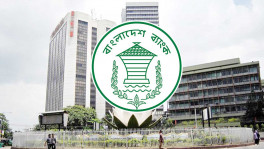Hilsa participation in breeding process jumps 103 times in two decades

Around 52% of hilsas successfully participated in the breeding process in 2022 due to the successful implementation of Mother Hilsa Conservation Campaign.
Participation of hilsas in the breeding process was 103 times higher in 2022 compared to the 2001-02 season, said Fisheries and Livestock Minister SM Rezaul Karim at a press briefing organised at the Bangladesh Agricultural Research Council on occasion of the Jatka Conservation Week, 2023.
Every year, a 22-day hilsa conservation campaign is conducted on 7-28 October as it is the main breeding season of hilsa, and during this time, the government imposes various restrictions and preventive measures on catching hilsa.
SM Rezaul Karim said 40.27 crore jatkas have been added to the hilsa family this year due to 52% participation in the hilsa breeding process.
The minister said the Jatka Conservation Week 2023 will be observed on 1-7 April with the aim of enriching Hilsa fish. The theme of this year's Jatka Conservation Week is "If Jatka is conserved, Hilsa production will increase".
Jatka Conservation Week will be celebrated in 20 hilsa-rich districts of the country.
SM Rezaul Karim said the country's rivers are rich in hilsa due to the ban on catching hilsa during its breeding period, and prohibiting catching, transporting, storing, buying and selling jatka for eight months from 1 November to 30 June for its safe growth.
Besides, the production of hilsa is increasing due to the establishment of six hilsa sanctuaries in the rivers and prohibition of catching all types of fish including hilsa in these sanctuaries, provision of support to fishermen every year during the ban, alternative employment arrangements for very poor fishermen who stop harvesting jatka.
While the production of Hilsa was 2.98 lakh tonnes in FY09, it has increased to 5.67 lakh tonnes in FY22. If jatka and mother hilsa can be preserved, the production of hilsa will increase much more.



 Keep updated, follow The Business Standard's Google news channel
Keep updated, follow The Business Standard's Google news channel
















